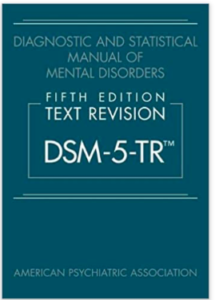 I’ll presenting an updated version of my past webinars on ADA website accessibility litigation for University of Texas Law School CLE. Learn the theory and sometimes ugly reality of how and why website owners are sued and how you can help yourself or your clients minimize the damage from such lawsuits. You can register at https://utcle.org/studio/ZBI22/ 1 hour of CLE credit for Texas and California attorneys. Check the link above for information about other states.
I’ll presenting an updated version of my past webinars on ADA website accessibility litigation for University of Texas Law School CLE. Learn the theory and sometimes ugly reality of how and why website owners are sued and how you can help yourself or your clients minimize the damage from such lawsuits. You can register at https://utcle.org/studio/ZBI22/ 1 hour of CLE credit for Texas and California attorneys. Check the link above for information about other states.



 Williams v Kincaid, 2022 WL 3364824 (4th Cir. August 16, 2022) is not the first case to consider gender dysphoria as a disability, and marks the second time the Fourth Circuit has considered the difference between gender identity and gender dysphoria.¹ However, as a circuit court opinion holding that gender dysphoria can be a disability covered by the ADA it has special prominence, not only because of its possible effect on individuals suffering from gender dysphoria, but also because of what it teaches about interpreting the ADA in light of changing science and technology and the possible need for updating the ADA’s definitions in light of those changes.
Williams v Kincaid, 2022 WL 3364824 (4th Cir. August 16, 2022) is not the first case to consider gender dysphoria as a disability, and marks the second time the Fourth Circuit has considered the difference between gender identity and gender dysphoria.¹ However, as a circuit court opinion holding that gender dysphoria can be a disability covered by the ADA it has special prominence, not only because of its possible effect on individuals suffering from gender dysphoria, but also because of what it teaches about interpreting the ADA in light of changing science and technology and the possible need for updating the ADA’s definitions in light of those changes. August is (in Texas at least) the month of afternoon thunderstorms. It’s a good metaphor for running a business subject to the ADA or FHA. Everything’s sunny and warm one minute then suddenly the wind is blowing and you are soaking wet. But the plants need the rain, so as usual there’s good and bad in ADA and FHA developments.
August is (in Texas at least) the month of afternoon thunderstorms. It’s a good metaphor for running a business subject to the ADA or FHA. Everything’s sunny and warm one minute then suddenly the wind is blowing and you are soaking wet. But the plants need the rain, so as usual there’s good and bad in ADA and FHA developments.